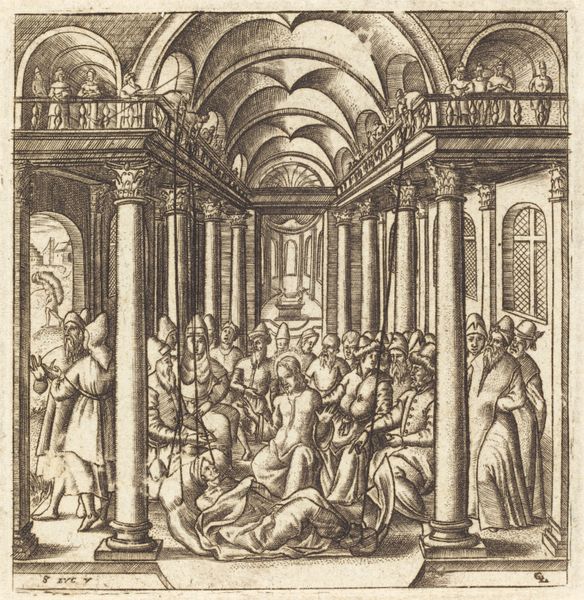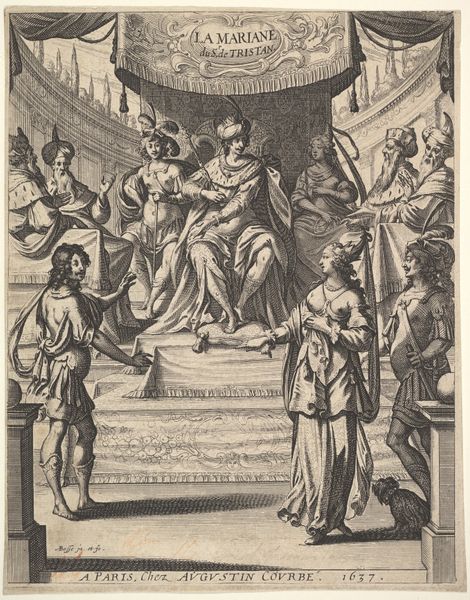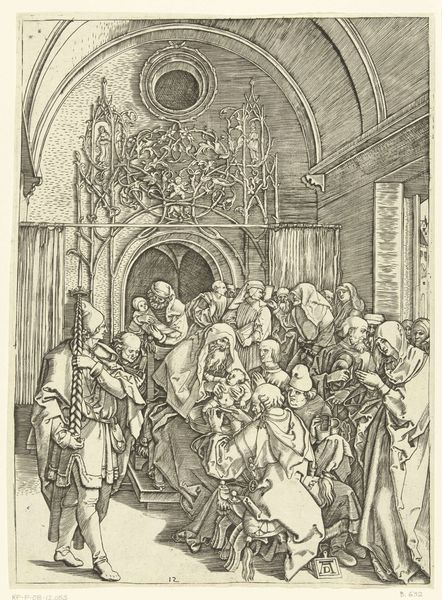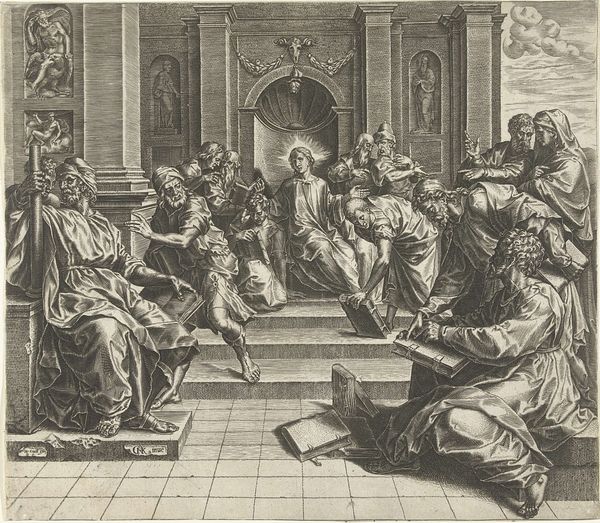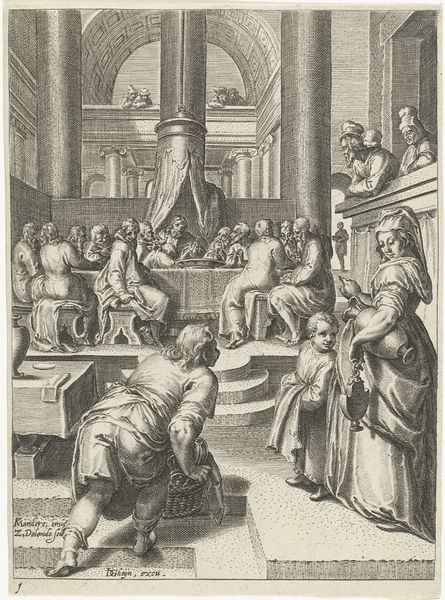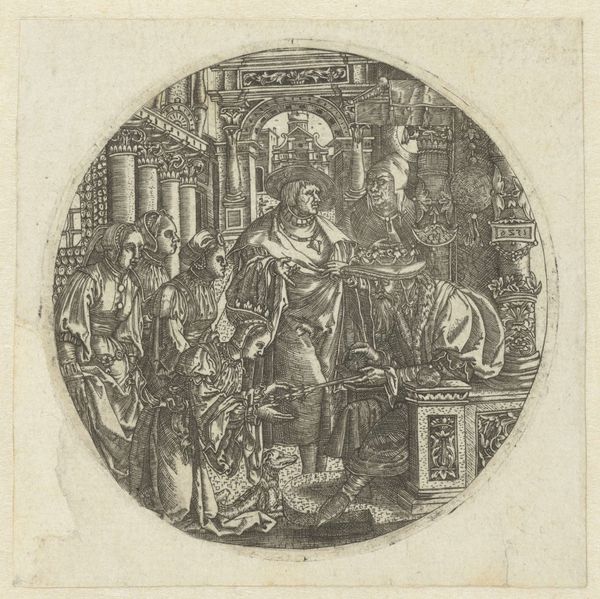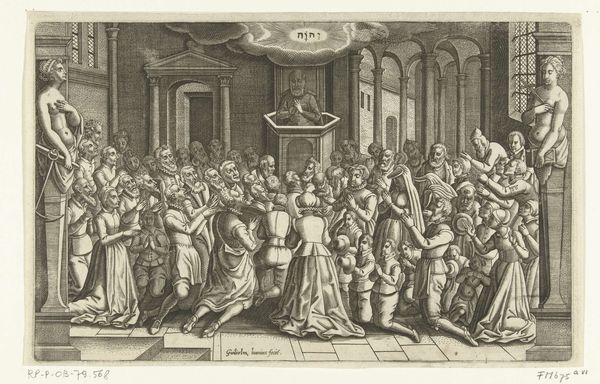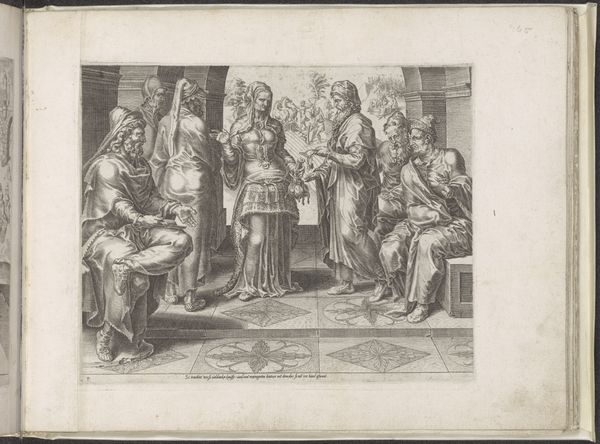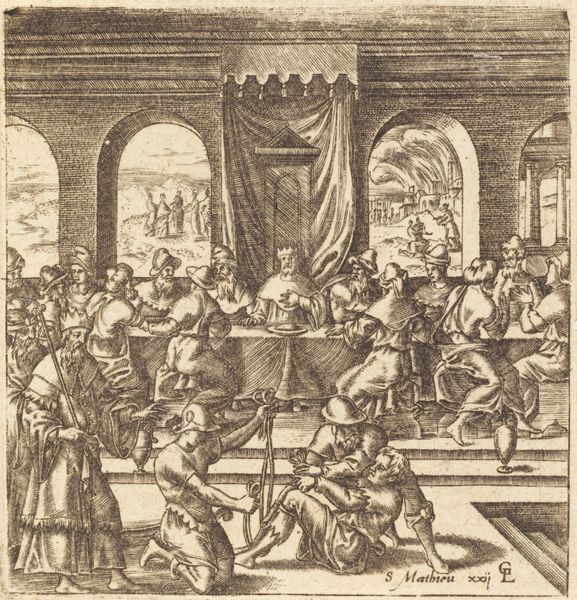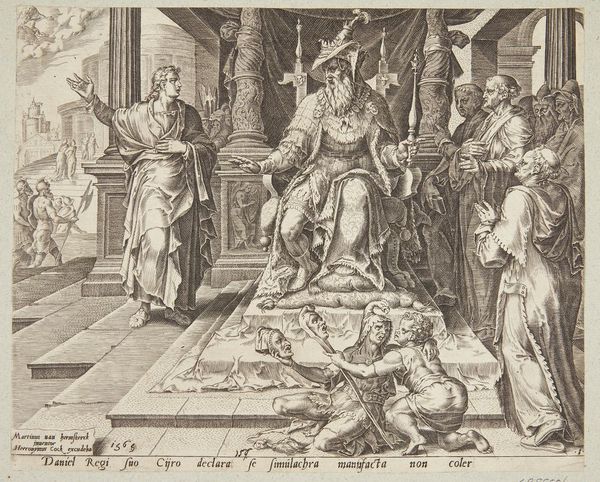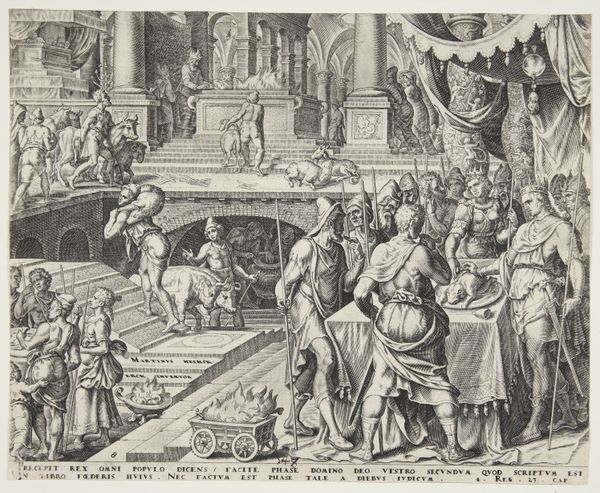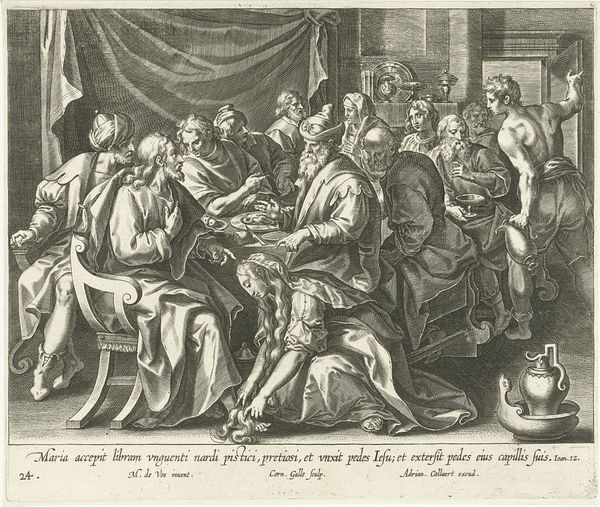
print, engraving
#
portrait
# print
#
figuration
#
line
#
history-painting
#
italian-renaissance
#
engraving
Copyright: National Gallery of Art: CC0 1.0
Editor: This is "The Chief Priests and Pharisees," an engraving by Léonard Gaultier from around 1576 to 1580. It’s got a real air of tension, doesn’t it? Like we're walking into a secret meeting. What do you see in this piece? Curator: It’s fascinating how Gaultier uses line to construct not just forms, but power dynamics. Notice the rigid geometry of the floor versus the ornate, almost overwhelming, decoration above. It creates this sense of being both confined and observed. Think about who these figures are meant to represent – the ruling class. How might Gaultier be subtly commenting on the intersections of religious authority and political control, particularly considering the religious conflicts of the time? Editor: I see what you mean about the power dynamics. The central figure is literally elevated! It’s almost theatrical. Curator: Exactly. The stage-like setting invites us to consider the performance of power and the roles these men are playing. Consider how their garments, almost identical, both unify them as a group but also serve as costumes in this historical drama. Do you think there might be a critical perspective embedded in the artwork about the collective and its individual members? Editor: That's a cool thought. I hadn’t considered how uniform their dress is and the potential implications. Almost like a uniform. It really does put a different spin on it, seeing it as a stage for political and religious maneuvering rather than just a historical scene. Curator: And understanding that this was a print, meant for wider circulation, allows us to reflect on how images participated in shaping public perception and even fueled social or political resistance. Food for thought, isn’t it? Editor: It is. It makes me see this work not just as an image from the past but as an active player in historical debates. Thank you!
Comments
No comments
Be the first to comment and join the conversation on the ultimate creative platform.
